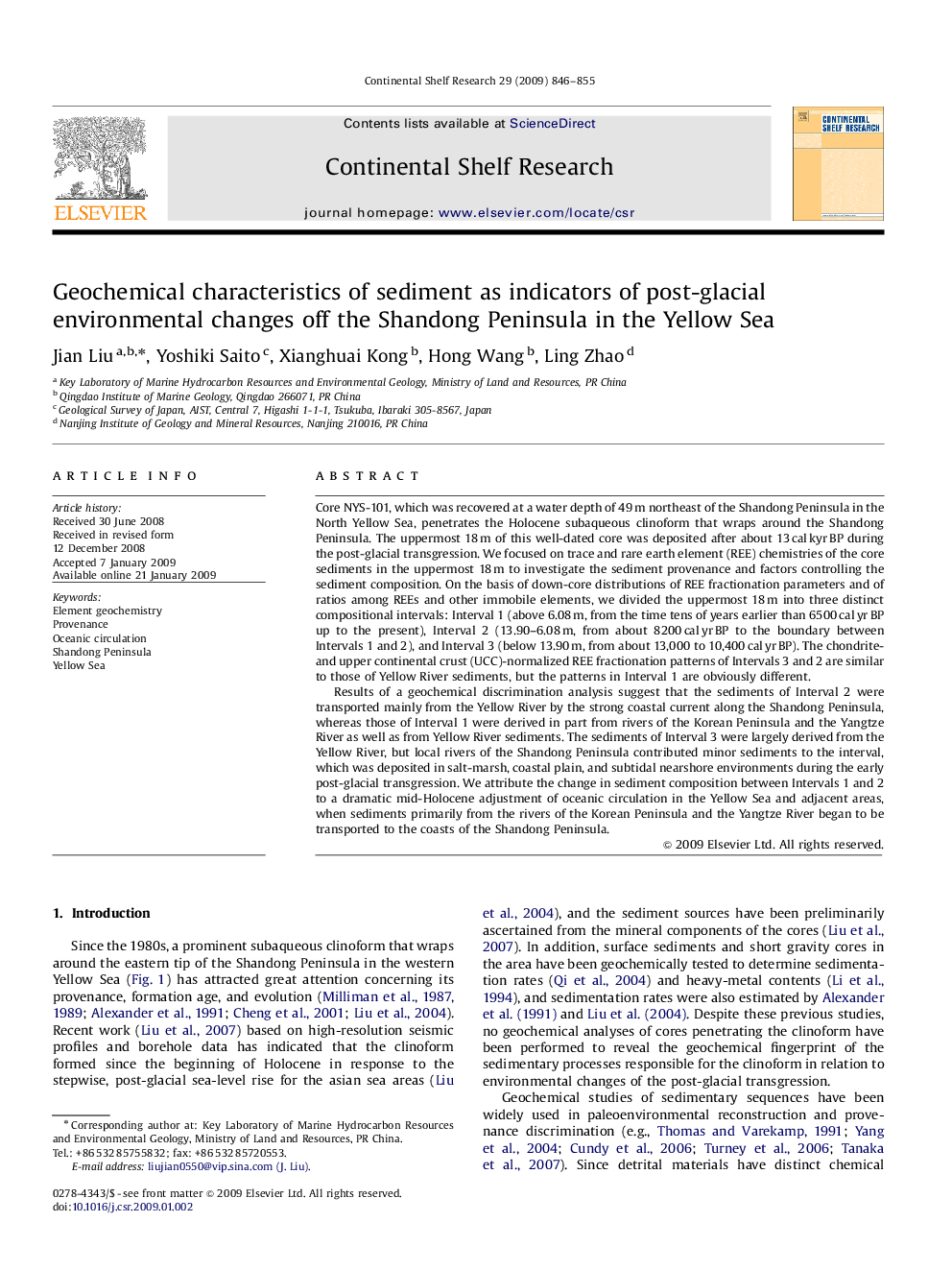| Article ID | Journal | Published Year | Pages | File Type |
|---|---|---|---|---|
| 4533214 | Continental Shelf Research | 2009 | 10 Pages |
Core NYS-101, which was recovered at a water depth of 49 m northeast of the Shandong Peninsula in the North Yellow Sea, penetrates the Holocene subaqueous clinoform that wraps around the Shandong Peninsula. The uppermost 18 m of this well-dated core was deposited after about 13 cal kyr BP during the post-glacial transgression. We focused on trace and rare earth element (REE) chemistries of the core sediments in the uppermost 18 m to investigate the sediment provenance and factors controlling the sediment composition. On the basis of down-core distributions of REE fractionation parameters and of ratios among REEs and other immobile elements, we divided the uppermost 18 m into three distinct compositional intervals: Interval 1 (above 6.08 m, from the time tens of years earlier than 6500 cal yr BP up to the present), Interval 2 (13.90–6.08 m, from about 8200 cal yr BP to the boundary between Intervals 1 and 2), and Interval 3 (below 13.90 m, from about 13,000 to 10,400 cal yr BP). The chondrite- and upper continental crust (UCC)-normalized REE fractionation patterns of Intervals 3 and 2 are similar to those of Yellow River sediments, but the patterns in Interval 1 are obviously different.Results of a geochemical discrimination analysis suggest that the sediments of Interval 2 were transported mainly from the Yellow River by the strong coastal current along the Shandong Peninsula, whereas those of Interval 1 were derived in part from rivers of the Korean Peninsula and the Yangtze River as well as from Yellow River sediments. The sediments of Interval 3 were largely derived from the Yellow River, but local rivers of the Shandong Peninsula contributed minor sediments to the interval, which was deposited in salt-marsh, coastal plain, and subtidal nearshore environments during the early post-glacial transgression. We attribute the change in sediment composition between Intervals 1 and 2 to a dramatic mid-Holocene adjustment of oceanic circulation in the Yellow Sea and adjacent areas, when sediments primarily from the rivers of the Korean Peninsula and the Yangtze River began to be transported to the coasts of the Shandong Peninsula.
